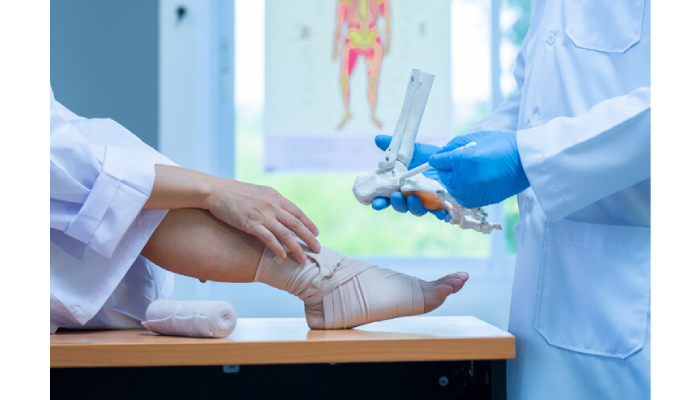
Orthopedic surgeons are specially trained doctors focusing on the musculoskeletal system, which includes bones, joints, muscles, ligaments, and related tissues. They treat a wide range of conditions such as fractures, arthritis, ligament tears, and deformities for patients of all ages. Becoming an orthopedic surgeon requires many years of education: college, medical school, residency, and usually fellowship training in a subspecialty like sports medicine or joint replacement. These surgeons perform various surgical procedures including joint replacements, fracture repairs, and arthroscopic surgeries to restore function or relieve pain. Recovery often involves physical therapy to regain strength. While surgery has risks like infection or stiffness, it can significantly improve mobility and quality of life.
Who Are Orthopedic Surgeons and What Do They Treat?
Louisiana orthopedic surgeons are medical doctors who focus on diagnosing, treating, preventing, and rehabilitating disorders of the musculoskeletal system, which includes bones, joints, ligaments, tendons, muscles, cartilage, and soft tissues. They help patients of all ages, from infants born with deformities to elderly individuals dealing with arthritis or fractures. Their work covers a wide range of issues, such as traumatic injuries like broken bones as well as chronic conditions like arthritis. Orthopedic surgeons use physical exams and imaging tools to evaluate complex problems and decide on the best course of treatment, which can be surgical or nonsurgical depending on the condition. They often specialize in specific areas of the body or types of conditions to provide focused care. These surgeons lead a team that may include physician assistants, nurse practitioners, physical therapists, and other healthcare professionals to ensure comprehensive treatment. Their ultimate goal is to restore movement, reduce pain, and improve the overall quality of life for their patients.

Education and Training Path for Orthopedic Surgeons
Orthopedic surgeons begin their journey with four years of undergraduate education, where they typically focus on pre-medical courses like biology, chemistry, and physics to build a strong foundation. After college, they attend medical school for another four years to earn either a Doctor of Medicine (MD) or Doctor of Osteopathic Medicine (DO) degree. Following medical school, they enter a rigorous five-year residency program in orthopedic surgery. During residency, they gain hands-on clinical training and surgical experience in all areas of orthopedics, including trauma care, joint replacement, pediatric orthopedics, and sports injuries. Many choose to further specialize by completing fellowship training lasting one or more years in specific fields such as spine surgery or sports medicine. To become board certified, orthopedic surgeons must pass exams administered by organizations like the American Board of Orthopaedic Surgery. Maintaining certification requires ongoing education to stay updated on the latest advances in orthopedic care. Some surgeons earn the FAAOS designation, demonstrating their commitment to continuous learning and delivering high-quality patient care.
Common Orthopedic Subspecialties Explained
Orthopedic surgery covers a broad range of subspecialties, each focused on specific parts of the musculoskeletal system and particular types of conditions. Foot and ankle specialists address issues like bunions, fractures, and tendon injuries in the lower limbs. Hand and wrist surgeons concentrate on conditions such as carpal tunnel syndrome, tendon repairs, and fractures in the hand or wrist. Hip replacement and reconstruction surgeons manage arthritis, fractures, and deformities around the hip joint, while knee specialists focus on ligament tears, arthritis, and meniscus injuries. Orthopedic oncologists diagnose and treat bone and soft tissue tumors, both benign and malignant, providing care that often combines surgery with other treatments. Trauma surgeons handle fractures and injuries resulting from accidents or severe trauma, often working in emergency settings. Pediatric orthopedics is dedicated to treating children’s conditions, including congenital deformities and growth-related problems. Shoulder and elbow surgeons focus on rotator cuff injuries, arthritis, and fractures in the upper arm region. Spine surgeons treat complex issues like herniated discs, spinal stenosis, and deformities affecting the spine. Lastly, sports medicine specialists manage athletic injuries such as ligament tears and overuse conditions, aiming to help patients return to their activities safely. Each subspecialty requires additional training and expertise, allowing surgeons to provide focused care tailored to the unique needs of their patients.
Conditions Managed by Orthopedic Surgeons
Orthopedic surgeons specialize in treating a wide range of conditions that affect the musculoskeletal system, which includes bones, joints, muscles, ligaments, tendons, and soft tissues. They manage musculoskeletal pain caused by injury or diseases that affect joints, bones, or muscles. Fractures and broken bones resulting from accidents or trauma are a common reason for orthopedic care, often requiring surgical repair or stabilization. Ligament, cartilage, and muscle tears are also frequently treated, such as anterior cruciate ligament (ACL) injuries in the knee, which can significantly impact mobility and stability. Arthritis and degenerative joint diseases cause pain, stiffness, and limited movement, and orthopedic surgeons offer treatments that range from medication to joint replacement surgeries. Inflammatory conditions like bursitis and tendonitis, which affect the joints and surrounding soft tissues, are also addressed to reduce pain and improve function. Orthopedic surgeons handle bone and soft tissue tumors by performing biopsies or surgical removals when necessary. They also correct congenital deformities such as clubfoot and scoliosis in children, improving quality of life from an early age. Sports-related injuries, including sprains, strains, and overuse syndromes, are another focus area, requiring both surgical and non-surgical approaches. Complex traumatic injuries involving multiple tissues or fractures demand specialized surgical intervention to restore function. Additionally, orthopedic surgeons manage postoperative complications and chronic musculoskeletal conditions that require ongoing care, ensuring patients regain their strength and mobility as much as possible.
Typical Orthopedic Surgical Procedures
Orthopedic surgeons perform a wide range of surgical procedures to address injuries, deformities, and degenerative conditions affecting bones, joints, and soft tissues. One common surgery is ACL reconstruction, used to repair torn anterior cruciate ligaments in the knee, especially for athletes who experience ligament injuries. Knee surgeries include total and partial replacements to relieve arthritis pain and restore mobility, often improving quality of life for patients with severe joint damage. Hip surgeries can involve full replacement or preservation techniques aimed at treating arthritis or developmental deformities, helping patients regain function and reduce discomfort. Shoulder procedures like rotator cuff repairs address tendon tears and instability, which can limit arm movement and cause pain. Many surgeries today utilize arthroscopy, a minimally invasive technique employing small incisions and cameras to diagnose and repair joint issues with less tissue damage and faster recovery. When bones break, orthopedic surgeons stabilize fractures using metal plates, screws, rods, or pins to ensure proper healing. Spinal surgeries cover a broad spectrum including fusion to stabilize vertebrae, decompression to relieve nerve pressure, and tumor removal to treat cancerous growths.
What Happens During Orthopedic Surgery?
Orthopedic surgery begins with the patient receiving anesthesia, which can be general (where the patient is asleep) or regional (numbing the area to be operated on). The surgeon then makes precise incisions to access the affected bones, joints, or soft tissues. Depending on the problem, the surgeon may repair, reconstruct, replace, or remove damaged tissues. Specialized instruments are used, and sometimes hardware like screws, plates, or prosthetic joints are implanted to support healing or restore function. In many cases, minimally invasive arthroscopic surgery is performed through small incisions using a camera to guide the surgeon, reducing recovery time and scarring. During the procedure, imaging or navigation systems may assist in placing implants accurately. The surgical site is carefully closed with sutures or staples and dressed to protect the wound. The length of the surgery varies widely, depending on complexity. Throughout the operation, the surgical team monitors vital signs and maintains sterile conditions to prevent infection. Once the procedure is complete, the patient is moved to a recovery area where they are monitored as the anesthesia wears off, preparing for the next steps in healing and rehabilitation.
Possible Risks and Complications of Surgery
Orthopedic surgery, like any surgical procedure, carries certain risks and potential complications that patients should understand. Bleeding during or after surgery can occur and may require intervention or even blood transfusions. Infections are another concern; they might develop at the surgical site or in deeper tissues, sometimes needing antibiotics or additional surgery to manage. Blood clots are a serious risk, particularly deep vein thrombosis (DVT) in the legs, or potentially a pulmonary embolism if a clot travels to the lungs. After surgery, some patients experience joint stiffness or a reduced range of motion, which can affect recovery. Muscle weakness or delayed return of muscle function is also possible, impacting mobility and strength. Nerve injury may cause numbness, tingling, weakness, or loss of sensation in the area around the surgery. Poor wound healing or noticeable scarring can affect outcomes and appearance. Reactions to anesthesia, including nausea or respiratory issues, are possible but usually well managed by the anesthesia team. For surgeries involving implants, such as joint replacements, there is a risk of implant failure or loosening, which might require revision surgery. Orthopedic surgeons take all these risks seriously and discuss them thoroughly with patients before surgery.
Recovery and Rehabilitation After Surgery
Recovery time after orthopedic surgery varies widely depending on the type of procedure performed. For example, ACL reconstruction often requires about nine months for a patient to regain full strength and function, while fracture surgeries generally heal within around three months. Knee replacement patients typically see significant improvement and return of function within three months after surgery. Postoperative care focuses on managing pain and preventing infection at the incision site. Patients must follow activity restrictions to protect the surgical repair during the healing phase, avoiding heavy lifting, strenuous activities, and contact sports until their surgeon gives clearance. Physical therapy plays a critical role in recovery, helping restore strength, flexibility, and joint motion. Rehabilitation programs are customized based on the surgery type and each patient’s overall condition. Regular follow-up appointments are essential to monitor healing progress through physical exams and imaging, ensuring that recovery stays on track and any complications are addressed promptly.